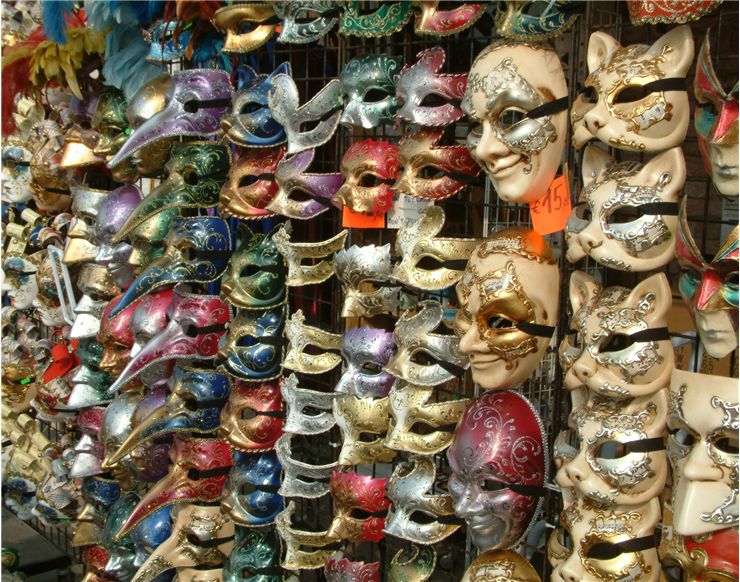History of Dance Masks - Topeng Dance
Topeng dance is a type of storytelling or drama dance from Indonesia accompanied with music. Dancers wear masks and bright costumes that represent characters in the play. It appeared in 15th century in Bali and Java where is prevalent still but it can also be found in other islands of Indonesia. Topeng dance originated from tribal dances held in the honor of ancestors, where dancers with masks were playing roles of messengers of gods. In the beginning, prevailing themes of Topeng dance were nature and ancestral spirits. Later themes became wider and “The Adventures of Prince Panji” became popular. After arrival of Hinduism, “Mahabharata” and “Ramayana” were adapted for performing as a Topeng dance.
Topeng dance is usually performed at “odalan”- a temple anniversary celebration. It begins with appearance on the stage by characters that may not be related to the story. They all wear masks. Characters of noble background wear masks that cover the whole face and they do not talk at all. They express their characters and story only through the dance and movement. All the storytelling is done by characters of servants or jesters that wear half-masks that do not cover the mouth so they could talk. They are each telling their view of the story and lead the audience through it. Beside the main, strictly defined story, dancers include jokes and current gossips for the laughter. Mythological tales are performed side by side with common stories. Masks are the one that define a character but they are also defined by a character. Characters of noble backgrounds wear beautiful white or golden masks while a half mask of jesters is more grotesque. There are also masks of demons and animals that share common animalistic features and there are masks of gods. Strong characters have masks painted in red. Shapes of masks are defined by the local tradition. Masks in Central Java are triangular in shape, in East Java they are archaically stylized while masks in Cirebon are very stylized and have faces reduced almost to a symbol.

In the Topeng dance, the whole play is played by four to five actors that play all characters, even the female ones. One actor plays many roles in one play with different masks. An actor can have about 40 Topeng masks that are only his and it is believed that there is a special kind of bond between the actor and his mask that allows him to infuse life in it and represent a wide specter of emotions through it. It is also believed that when actors puts his mask on he is connected to the spirit realm and is in a form of trance.

